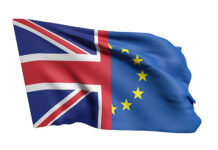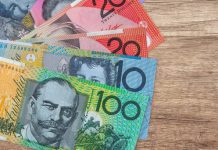EUR/USD has edged lower on Monday, after posting strong gains in the Friday session. Currently, the pair is trading at the 1.06 level. In the Eurozone, retail sales were stable in February, as Retail PMI came in at 49.1, down slightly from 50.1 a month earlier. The Sentix Investor Confidence report improved to 20.7, beating the estimate of 18.8 points. In the US, today’s highlight is Factory Orders, with the indicator expected to dip to 1.1%. On Tuesday, Germany releases Factory Orders, with the markets bracing for a sharp decline of 2.5%.
The euro dropped below the 1.05 line on Thursday, as EUR/USD dropped close to 7-week lows. Investors seized the opportunity and locked in profits on Friday, which helped boost the sagging euro. The pair gained 1.0% on Friday, marking its strongest 1-day gain since January 5. German Retail Sales disappointed, but this didn’t impede the euro’s rebound. Retail Sales declined 0.8%, well off the forecast of +0.2%. This marked a fifth decline of six releases, pointing to weakness in German consumer spending. Meanwhile, Eurozone inflation levels pointed higher in February. German Preliminary CPI rebounded posted a strong gain of 0.6%, matching the estimate. The Eurozone CPI Flash Estimate rose to 2.0%, hitting the ECB inflation target. Policymakers are now faced with a concern that they haven’t experienced in years – will inflation rise too fast, too quickly? The central bank could curb inflation by tightening monetary policy, but will be hesitant to tinker with interest rates or its asset-purchase program unless growth and inflation indicators heat up significantly.
With the US economy continuing to perform well, market sentiment has heated up regarding a Fed rate hike. Federal Reserve policymakers continue to sound hawkish about a rate move on March 15, when the Fed next meets for a policy meeting. Last week, FOMC members William Dudley and John Williams both hinted at an imminent hike by the Fed. Dudley said the case for a hike is compelling, while Williams noted that a rate increase will be up for “serious consideration” at the March policy meeting. The markets are taking these statements at face value, as the odds of a March move have increased dramatically. The likelihood of a rate this month has jumped to 80%, compared to 33% just a week ago. Why the huge jump in odds? One reason is that policymakers are now saying they won’t wait for Donald Trump to outline tax reform or other economic packages before making a monetary move. This is a significant departure from a few weeks ago, when the Fed sent out signals that it would stay on the sidelines until it had a clearer picture of the economic stance of the new administration.












